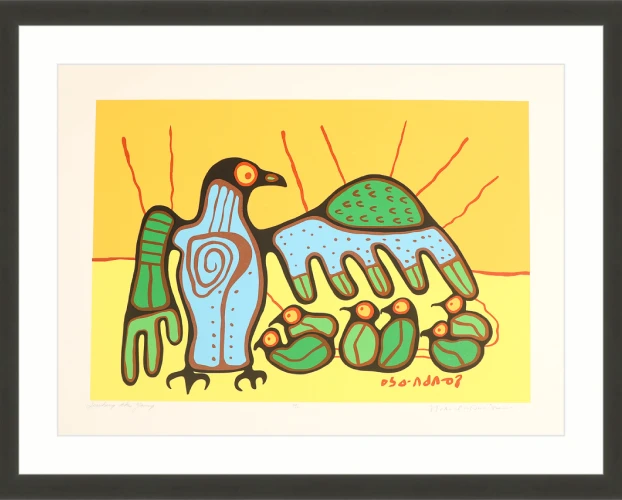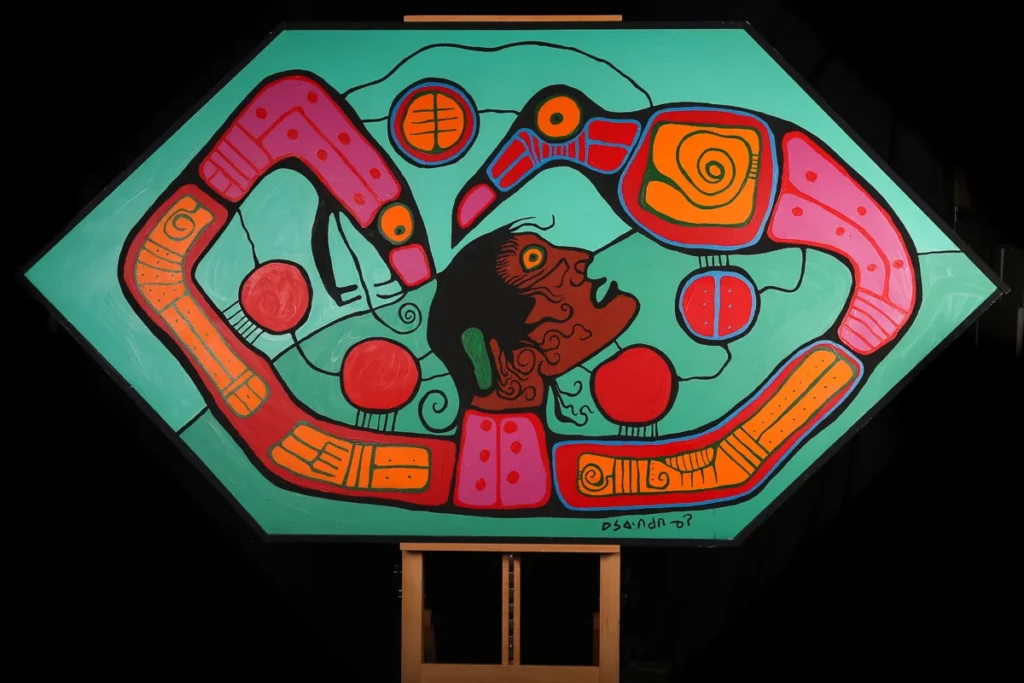News & Articles
Latest EA Studios Blog Posts
Norval Morrisseau & The Woodland School Of Art
Despite its name, the Woodland School of Art isn’t an actual school for learning. Instead, it is a symbolic reference to the founder and next generation of artists who pursued a challenging but joyful path of bringing sacred Anishinaabe cultural traditions to light through art.
Where the Woodland School Of Art began
Norval Morrisseau, the founder of the Woodland style of art, dedicated his career to breaking down stereotypical views of Indigenous culture. He used his talent to share his traditional values and wisdom with the world.
Morrisseau was commonly called the “Picasso of the North” for his remarkable career as the first Indigenous artist to display his art in a Canadian galley. He decided to defy the rules of his community at an early age and began creating art replicating traditional First Nations legends he studied on birch bark scrolls.
Morrisseau’s Woodland art style was often created on canvas, paper or even wood to represent the similarities to ancient Indigenous messaging. Other Woodland artists can be seen expressing themselves by painting variations of animals, plants, humans or other natural resources from the land.
These pieces of art created by Morrisseau were the first of their time, and his community didn’t take well to the creations due to the historical value these symbols held. Although the elder generation was not fond of the art, Morrisseau inspired a new generation of artists who studied and mastered the style. These artists constructed the Woodland School of Art to braid together spiritual beliefs and legends with the symbolism and imagery representing the Anishinaabe culture.
Symbolism
Although the contemporary styled images are often simplistic, they carry a heavy message with ancient cultural beliefs.
Indigenous cultures have used symbols as a form of communication since the beginning of time. In a prehistoric world, they were used to express ideas, mythology, or even describe a location. This symbolic language is treasured by their communities and shows the cultural importance this style of art holds.
Woodland art is often called medicine or legend painting because of the traditional beliefs behind what these artists are creating.
Medicine Painting Symbols & Their Meaning
Lines of Power
Lines shining from the bodies of either animals or people represent transmitting or receiving information. The lines can be seen in different lengths or styles to inform how powerful the message portrayed is.
Lines of Movement
Small lines show viewers something is moving. This could mean physical movement or represent a more figurative meaning, like a path to follow.
Lines of Communication
Communication is drawn through flowing lines to represent and reflect on the deep connection built between two living beings.
Lines of Prophecy
Vines growing from something’s mouth indicate prophecy in a powerful creature. These symbols are usually drawn in paintings associated with the Shamanism religion.
The Divided Circle
A divided circle reflects dualism and the true concept between two distinct aspects.
Colour Selection
Colour might not seem like an essential piece to these creations, however, you’ll only see this style of medicine painting in bright, bold colours to represent the inner purity of the soul. Of course, depending on the artist, each colour selected could mean something different. Still, the similarity between artists is that you will always find the bold colours surrounded by thick, black lines.
The Impact
Norval Morrisseau is known as one of the greatest Indigenous artists of all time for his work with the Woodland School of Art. He was even awarded the Order of Canada for his outstanding work shining a light on Indigenous culture.
The rich, contemporary feel of medicine painting makes this art highly sought after across the globe, making it a challenge to find authentic Norval Morrisseau work. The entire collection at EA Studios was commissioned when the Studio sponsored Morrisseau at Maligne Canyon Tea House throughout the ’80s. As a result, every Morrisseau in our collection is authentic and was painted while he lived there. More of Morrisseau’s acrylic canvas prints can be seen here.

